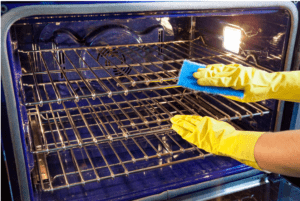
How to Make Buttermilk from Milk: A Simple Guide for Every Home Cook
Ever started a baking recipe and realized you’re out of buttermilk? Credits: Maryam Sicard | Unsplash There’s nothing quite like

Pets bring joy, companionship, and a sense of fulfillment to our lives. They become beloved
family members, and their well-being directly affects our own happiness. Just like us, pets need
the right tools and accessories to thrive. From comfortable beds to engaging toys, the right
accessories can significantly enhance your pet’s well-being. In this post, we’ll explore some
must-have pet accessories that can help ensure your pet remains happy and healthy.
Staying hydrated is crucial for pets, and water fountains can encourage them to drink more. These devices keep water circulating, which can make it more appealing to pets.
The type of brush or comb you need depends on your pet’s coat type. Slicker brushes are great for removing tangles and mats in long-haired breeds, while bristle brushes work well for short-haired breeds. De-shedding tools can help reduce shedding and keep your home cleaner.
Keeping your pet’s nails trimmed is crucial for their comfort and health. Overgrown nails can cause pain and even lead to infections. Nail clippers come in various sizes, so choose one that suits your pet’s size. Nail grinders are a gentler alternative, allowing you to file down the nails gradually.
Training Accessories
Investing in quality pet accessories is an investment in your pet’s happiness and health. By
choosing products that cater to their specific needs, you can ensure they live a comfortable, safe,
and fulfilling life. Remember, a happy pet makes for a happy home! From cozy beds to engaging
toys, the right accessories can make a significant difference in your pet’s quality of life.
What are your pet’s favorite accessories? Don’t forget to visit our website and check for available pet accessories and also subscribe to our blog for more pet care tips and advice.
Get our most valuable tips right inside your inbox, once per month!

Ever started a baking recipe and realized you’re out of buttermilk? Credits: Maryam Sicard | Unsplash There’s nothing quite like

Possibly the most dreaded task when cleaning your kitchen lies in the oven. Cleaning oven racks, or shelves, when baked

One-pot meals are becoming everyone’s favorite cooking hack. Whether you’re a busy mom or a business professional needing to make

Baby Bunnies – Uniquely made creatures. Do you know that baby bunnies are born deaf, blind, and without fur? Shocking,

Okay, let’s be honest, my pizza stone has seen some things. Things like a calzone disaster that left a cheesy

There are many benefits of owning down comforters. Besides the obvious enjoyment of sleeping under a lightweight, soft, and warm
My Worthy Home © All rights reserved.